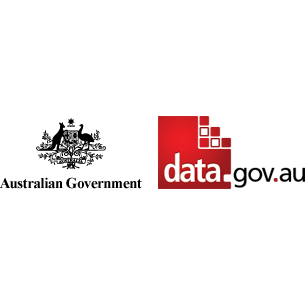Brief description
## **Abstract**This dataset and its metadata statement were supplied to the Bioregional Assessment Programme by a third party and are presented here as originally supplied.
The dataset expresses the potential for groundwater interaction/use for river/spring/wetland ecosystems across Australia. It shows the ecosystems that rely on groundwater that has been discharged to the surface, such as baseflow or spring flow. The dataset was created by analysing all river/spring/wetland polygons contained in existing maps, and the outcome of the analysis identified which of those polygons were potentially interacting with groundwater. All river/spring/wetland polygons are considered to be accessing a source of water in addition to rainfall, and hence, they are all Inflow Dependent Ecosystems (IDEs). The river/spring/wetland ecosystems were analysed to determine whether the additional water source was likely to be groundwater, water in the unsaturated zone or surface water. Where this additional information enabled a conclusion to be made on the potential of each river/spring/wetland ecosystem to be interacting with groundwater, the ecosystem was included in the Groundwater Dependent Ecosystem (GDE) layer ('Reliant on surface expression of groundwater') and categorised as having either a high, moderate or low potential for groundwater interaction.
The dataset expresses the potential for groundwater interaction/use of vegetation ecosystems across Australia. It shows the ecosystems that use groundwater from beneath the watertable or in the capillary zone. The dataset was created by analysing all vegetation polygons contained in existing maps, and the outcome of the analysis identified which of those polygons were potentially interacting with groundwater. The analysis initially identified vegetation polygons that were using another water source in addition to rainfall using remote sensing (MODIS and Landsat) data. These ecosystems are known as IDEs. The IDEs were then analysed further to determine whether the additional water source was likely to be groundwater, soil water or surface water. Where this additional information enabled a conclusion to be made on the potential of each vegetation IDE to be using groundwater, the ecosystem was included in the GDE layer ('Reliant on subsurface groundwater') and categorised as having either a high, moderate or low potential for groundwater interaction.
A publicly available version of this dataset can be accessed via the following dataset: National Atlas of Groundwater Dependent Ecosystems (e358e0c8-7b83-4179-b321-3b4b70df857d).
National Atlas of Groundwater Dependent Ecosystems is available online at http://www.bom.gov.au/water/groundwater/gde/.
## **Dataset History**
refer to methodology report
http://www.bom.gov.au/water/groundwater/gde/reports.shtml
Should also be noted that metadata related to each of the GIS layers in the Atlas is included in the GIS.
## **Dataset Citation**
Bureau of Meteorology (2012) National Groundwater Dependent Ecosystems (GDE) Atlas (including WA). Bioregional Assessment Source Dataset. Viewed 13 March 2019, http://data.bioregionalassessments.gov.au/dataset/6dbaee0d-8813-46b1-9c13-1b796e7ed3bf.
Spatial Coverage And Location
text: POLYGON ((0 0, 0 0, 0 0, 0 0))
Subjects
Australia |
Cooper subregion |
Galilee subregion |
Gloucester subregion |
Hunter subregion |
Namoi subregion |
Sydney Basin bioregion |
biota |
geoscientificInformation |
inlandWaters |
User Contributed Tags
Login to tag this record with meaningful keywords to make it easier to discover
Identifiers
- Local : 6dbaee0d-8813-46b1-9c13-1b796e7ed3bf
- URI : data.gov.au/data/dataset/108e8c9d-039e-47ad-959b-e0cbcc7aa78f



